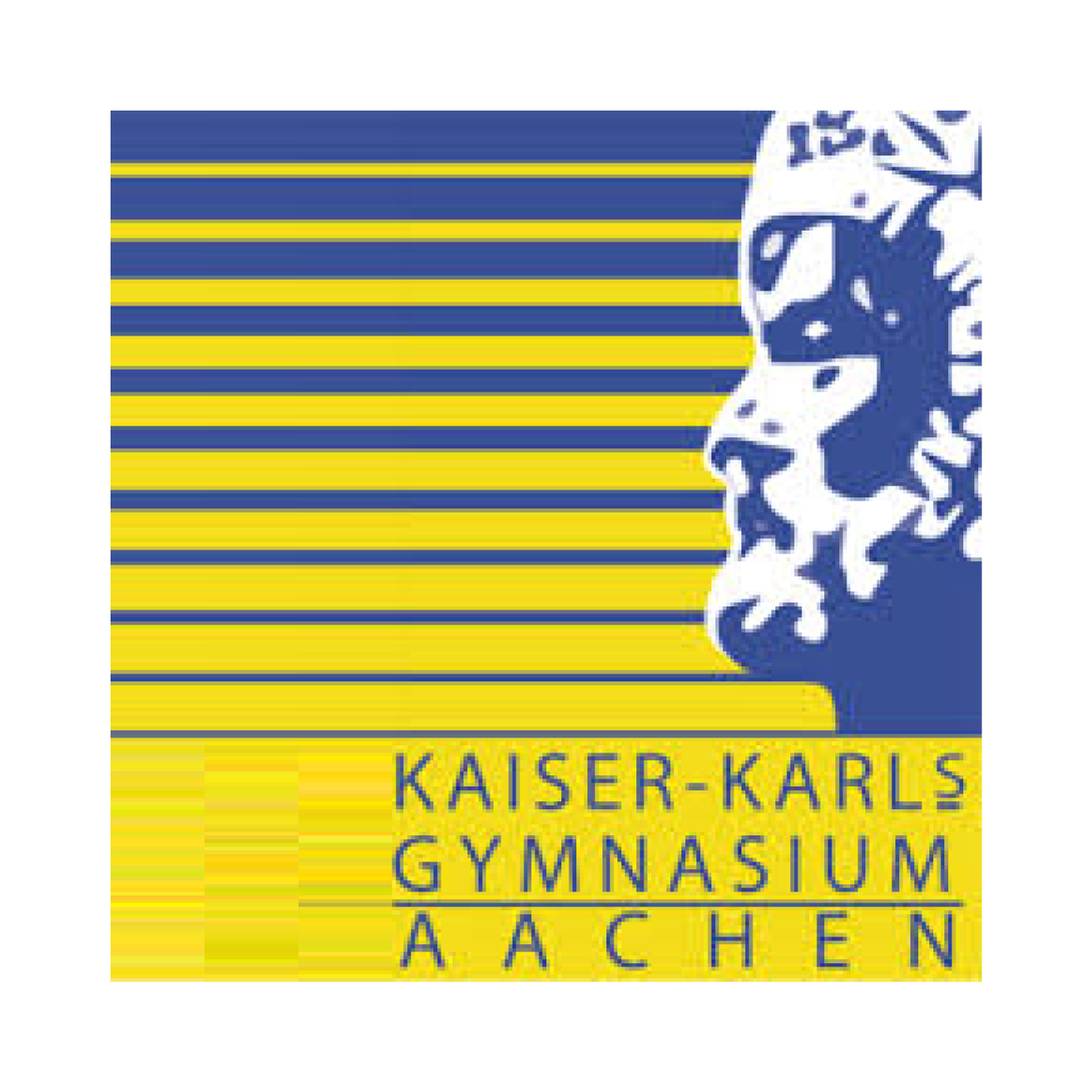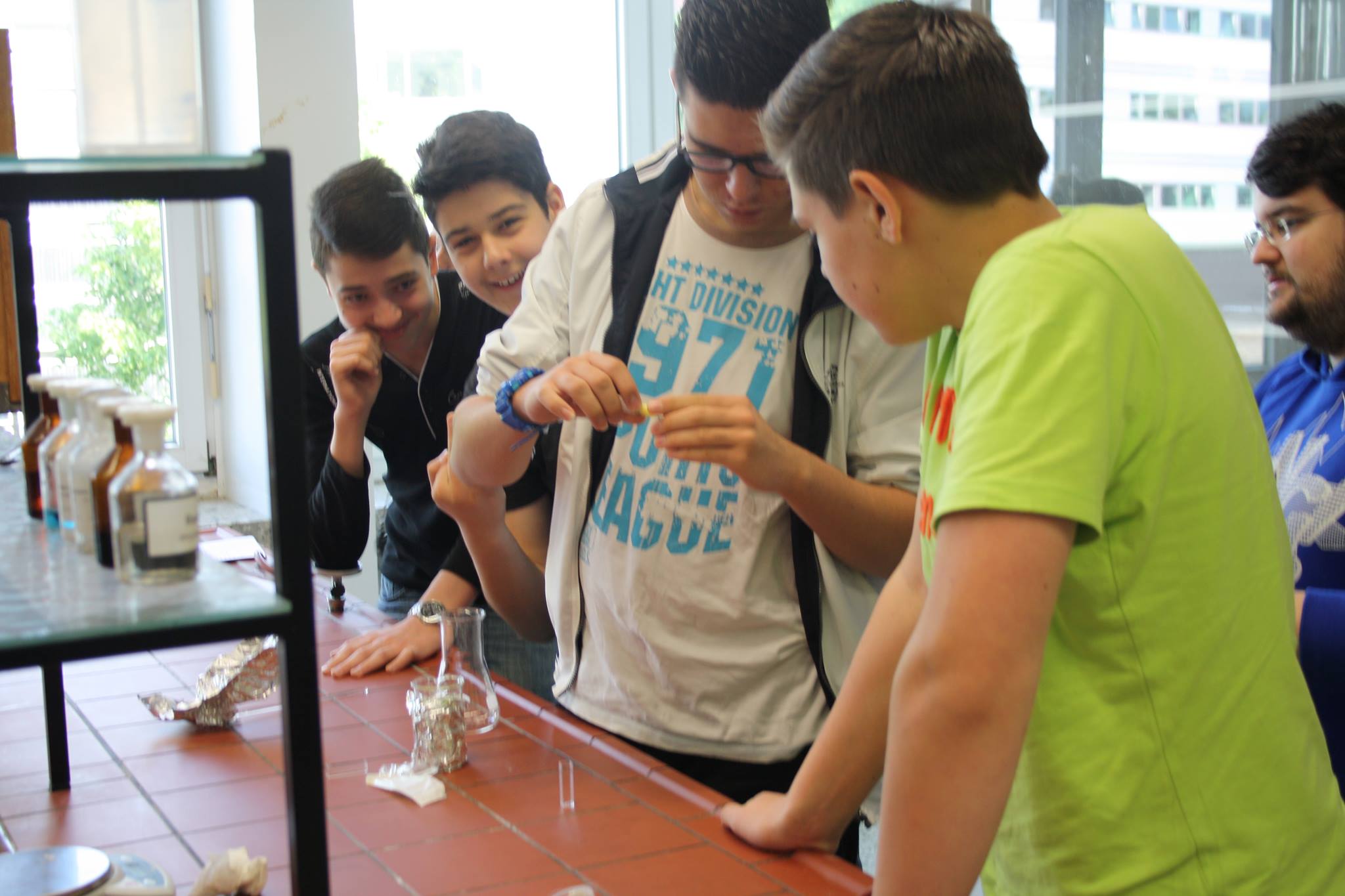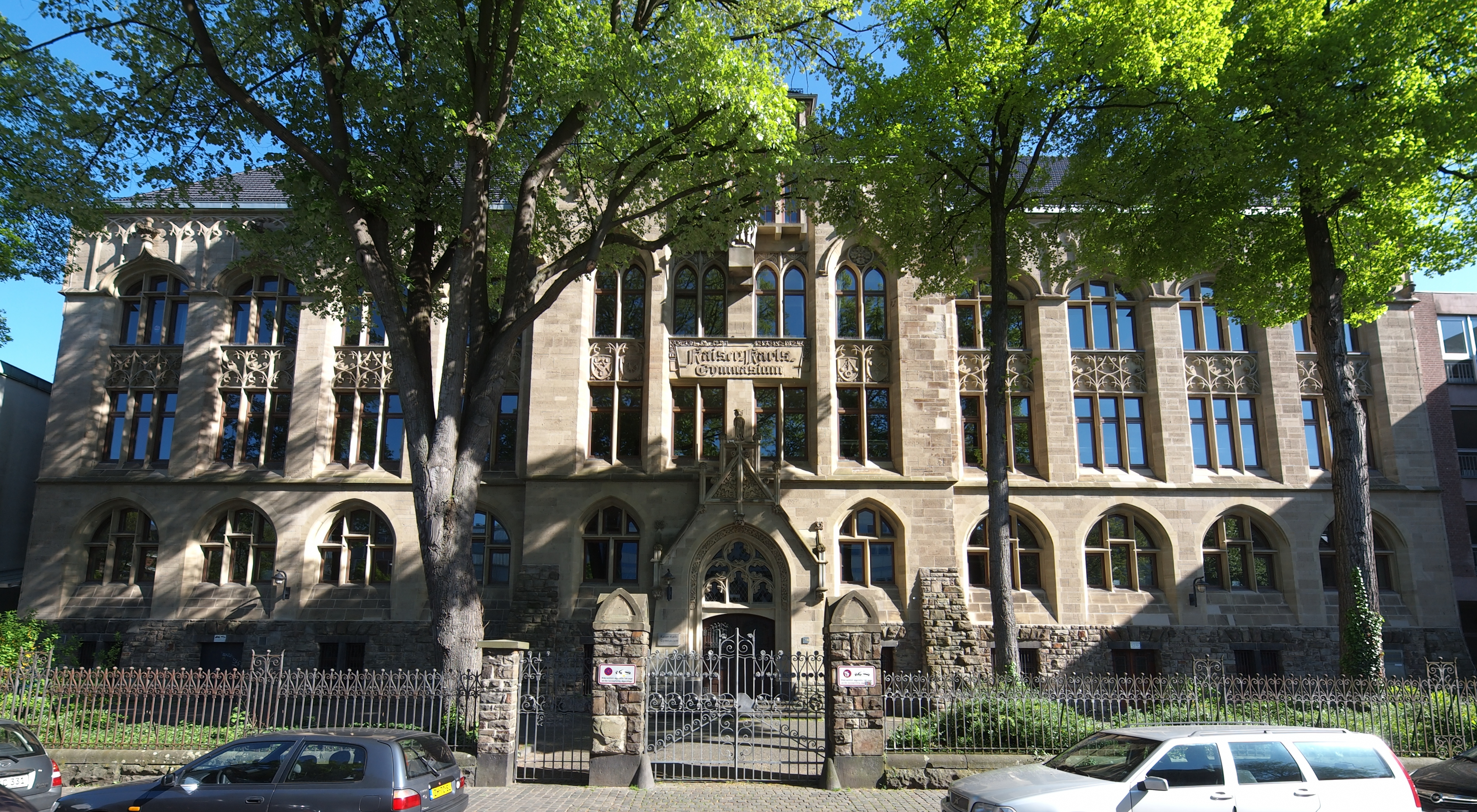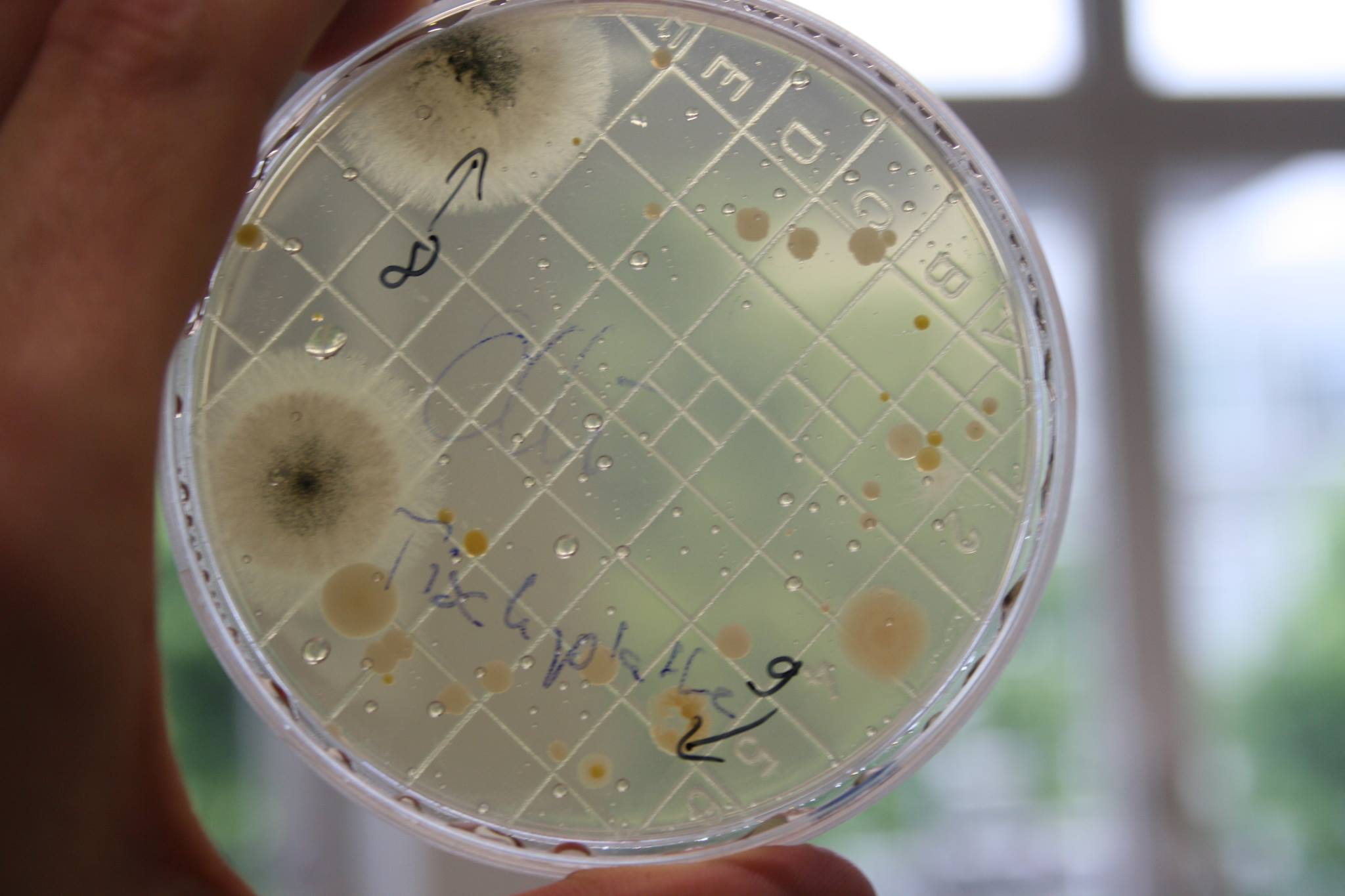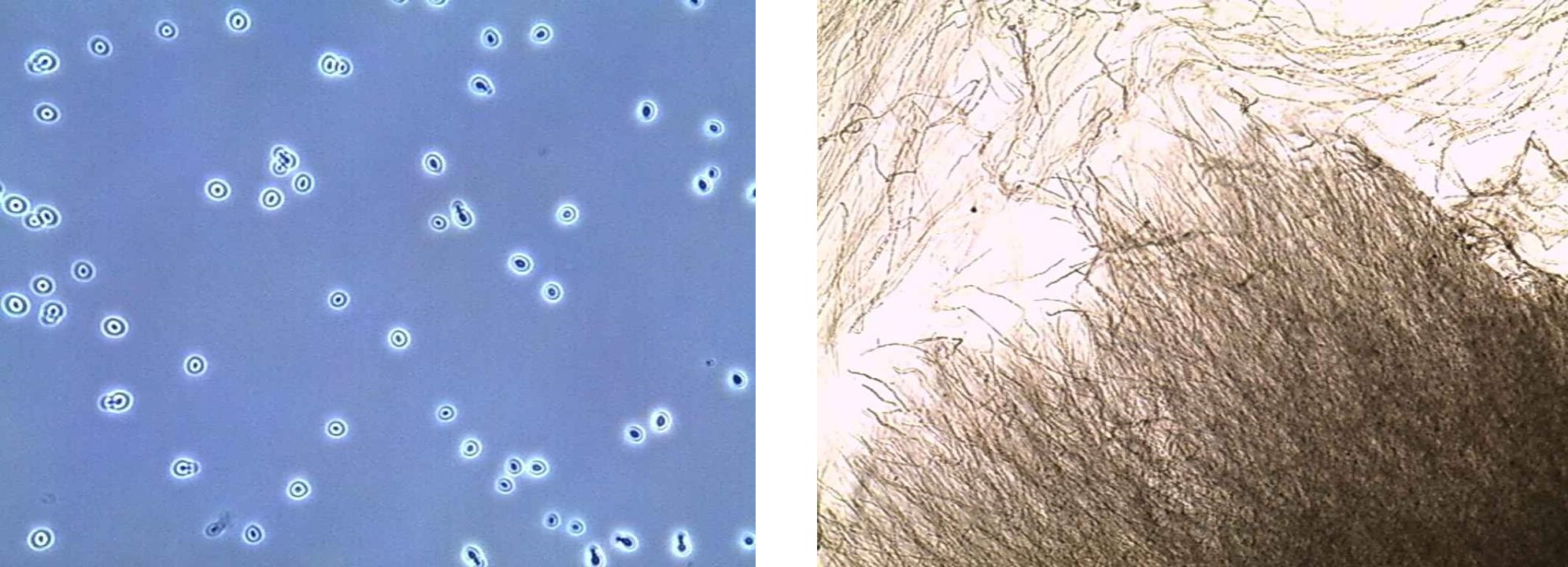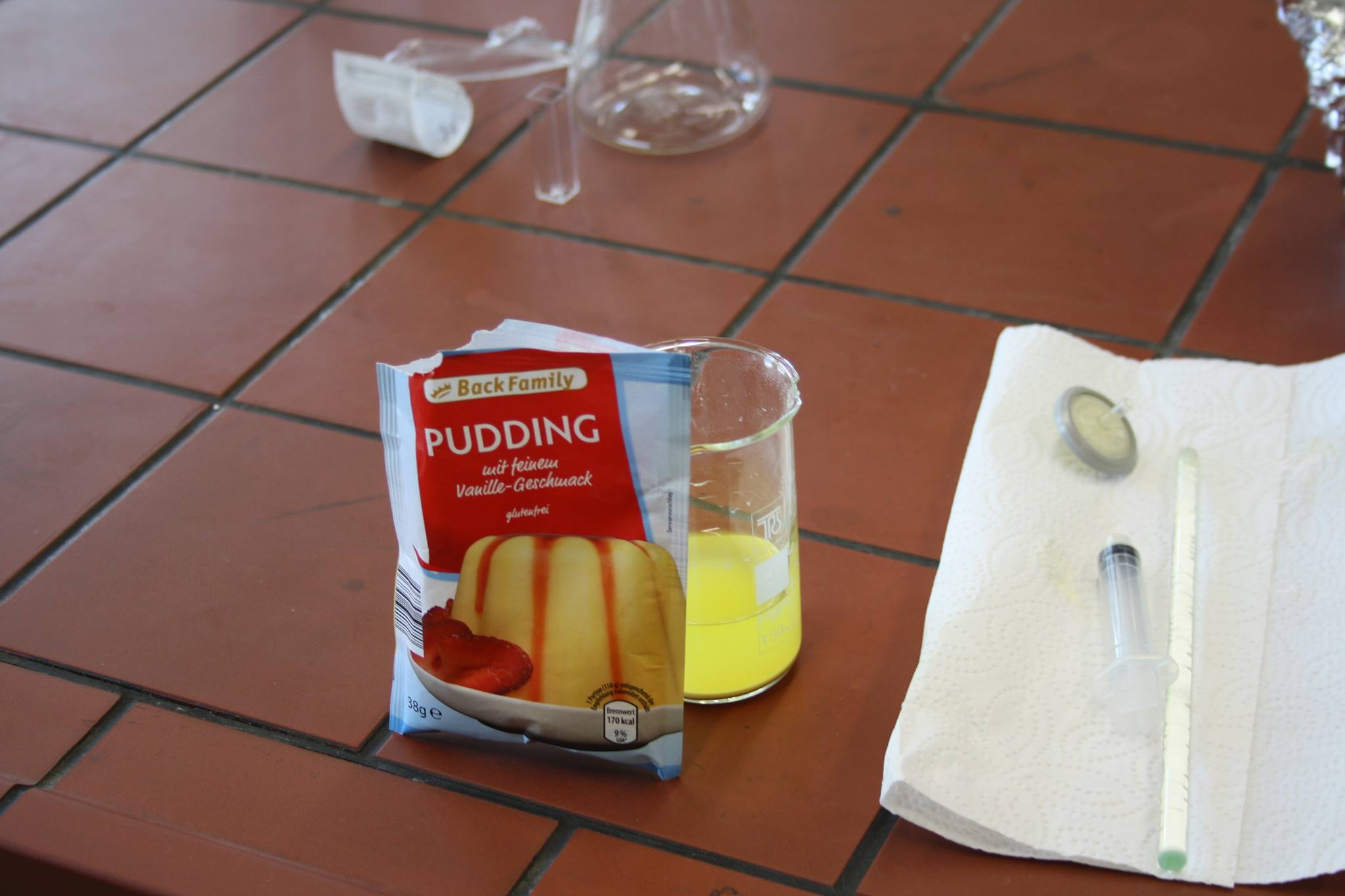Lesson 8 - Students Explore Careers in Synthetic Biology
By Nina 21:11, June 12 2014 (CDT)
Our "Synthetic Biology" teaching module has come to an end. Today was our last day at Kaiser-Karl-Gymnasium in Aachen, where we have worked together with a grade 9 biology-chemistry class for past 1 1/2 months. The students have learned about the iGEM and synthetic biology in general. We presented our project to the class, and explained various aspects for our endeavour in more detail.
To give interested students some overview of how they can get involved in synthetic biology, Vera, Florian, Ansgar and Björn gave short presentations about each university program at RWTH represented in our team: Biology, Biotechnology, Computational Engineering Science and Informatics, respectively. We gave them examples for typical classes and specialization options as well as career perspectives in each program.

While discussing some more career perspectives, we handed an evaluation sheet out to each student. This way the class could give us some feedback about our work, and leave some comments on what they liked best and what we can still improve on. On average, the students gave us an A (1,9 or 87%) for the teaching module. We are really happy about this great mark, and will try to improve on all the things the students suggested.
Unfortunately, the bell already rang when the students finished handing in their evaluation sheets. However, some students still followed our invitation to stay after class to ask more questions about paths into synthetic biology, and for some cookies.
Overall, all parties seemed really satisfied with our collaboration and we are looking forward to repeating the teaching module with other high school classes!
|
 "
"
